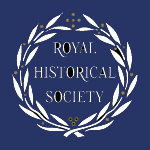I have compiled a set of notes for Napoleon on St Helena. This list comprises historical figures, subjects and events that I found useful in developing my understanding of The Atlantic World of Napoleon Bonaparte.
Click on the relevant letter of the Alphabet or Search for a specific name. For information on the regiments search under ‘R’.
There are currently 3 names in this directory beginning with the letter M.
Maidstone
trials at. May 1798. Soon after the start of the Irish Rebellion, spies from the Alien Office and other informers procured evidence of sedition against the British Government. A number of Irishmen men arrested and a special commission was formed at Maidstone to try the prisoners in the High Court. The prisoners, O’Connor, Quigley and Leary, who went under a number of aliases, were accused of treason that involved the landing of French troops, ships and arms in Ireland. A large number of jurors and witnesses were called in order to provide the charge with credibility. A number of the Bow Street Runners were called as witnesses in addition to individuals drawn from throughout the country including Manchester. The London Corresponding Society was also implicated in the charges. All the accused were acquitted except for O’Connor whop was executed.
Marryat
Frederick. Capt. RN. 1792-1848. Novelist and cartoonist. Author of Children of the New Forest. Commanded HMS Beaver on St Helena. Attended the laying out of the body of Napoleon on 6th May 1821 and sketched his death mask. Born on Tower Hill, Marryat was the son of a wealthy and well-connected London merchant, Joseph Marryat. Joseph had good connections in the City of London; with the East India Company and at Lloyds, where he was Chairman of the Patriotic Fund set up to support widows and orphans of the Battle of Trafalgar. He was also the official agent for the Island of Antigua. Through his Lloyds work he met Lord Thomas Cochrane and when Fred was 15 secured him a cadetship with Cochrane on board the Imperieuse, a 38-gun warship captured from the French. Young Marryat was a stout young man and able to defend himself below decks. He soon gained a reputation for daring; shared with Cochrane in the many successes of the various ships in which he served and had a particular reputation for saving lives at sea. He served in the War of 1812 on HMS Spartan on the Canadian border and again in 1814 in HMS Newcastle. When Napoleon had been defeated, Marryat was fortunate to use his influence to be promoted to commander and given command of HMS Beaver on St Helena. After Napoleon’s death he transferred to HMS Rosario and was ordered to bring the news back to London. In 1823 he was ordered to the Far East and served in the war in Burma and in gunboats up the Irrawaddy river. In 1830 Marryat retired on half-pay from the Navy and settled in Norfolk where he lived for the remainder of his life whilst maintaining his links with bohemian and literary London.

